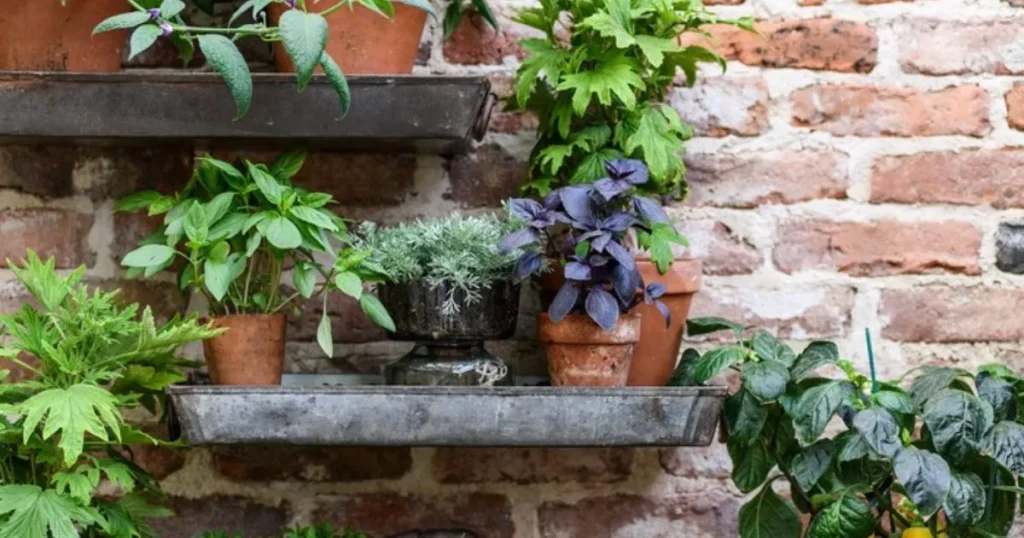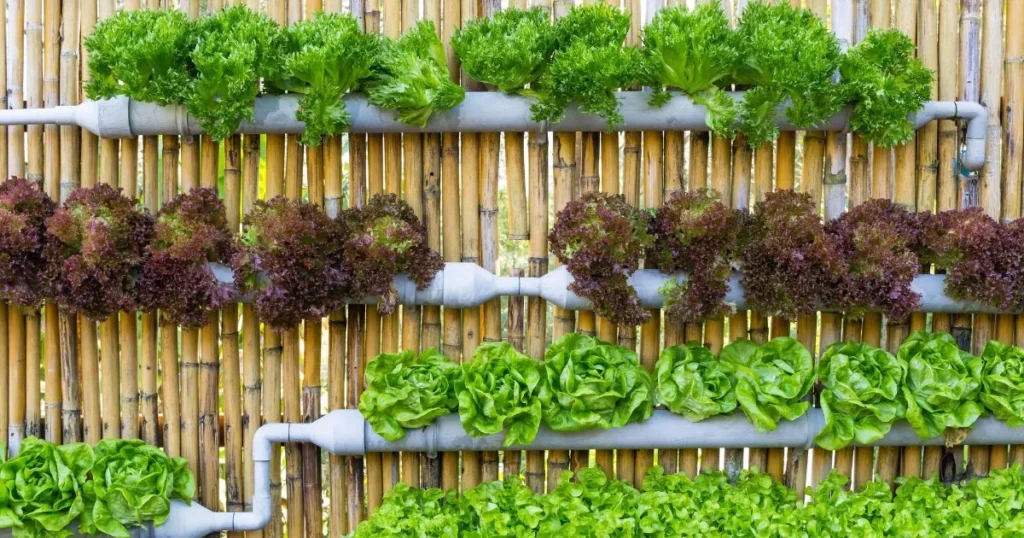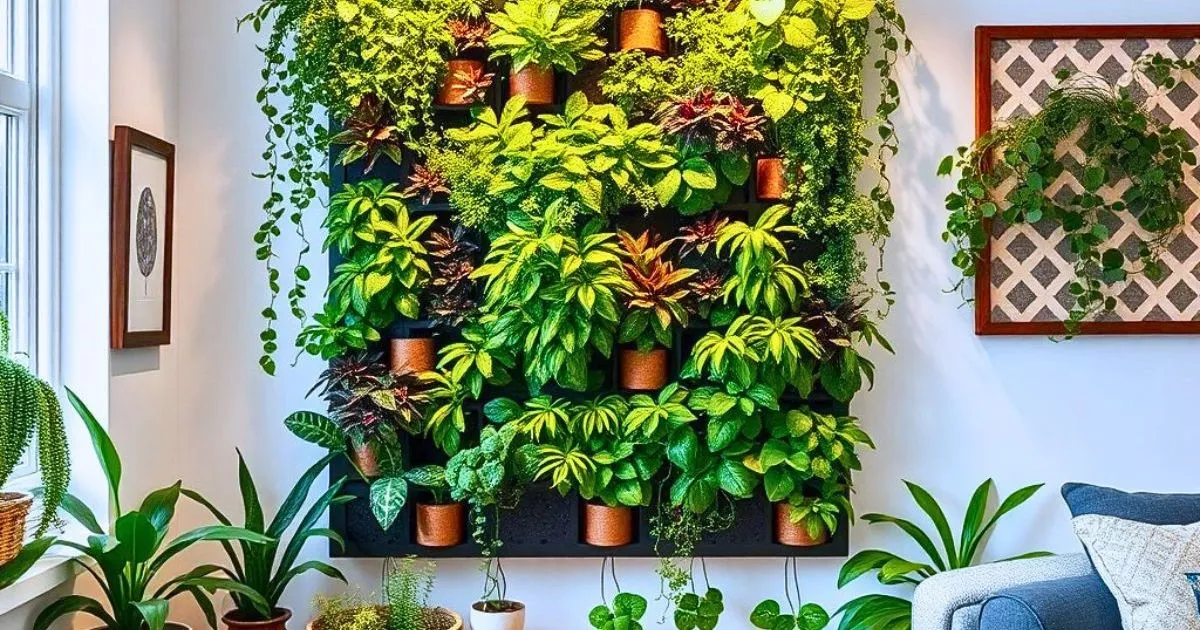Table of Contents
Introduction to Vertical Gardens
As urbanization increases, cities are becoming more crowded, and available space is shrinking. In such an environment, the idea of using vertical gardens – or green walls – has gained popularity. These innovative structures provide solutions to modern urban challenges, offering a way to integrate nature into densely populated spaces. Vertical gardens allow for the use of vertical space to grow plants, transforming the built environment into green, living spaces. They are not just aesthetically pleasing but provide numerous environmental, social, and economic benefits.
A Brief History of Vertical Gardening
The concept of vertical gardening is not entirely new. Ancient civilizations utilized vertical plant cultivation techniques, such as the use of trellises in the Hanging Gardens of Babylon or espaliered trees in the Roman Empire. However, modern vertical gardens as we know them today began to take shape in the late 20th century. Patrick Blanc, a French botanist, is often credited with pioneering the concept of the living wall, which is widely used today in urban spaces.
Benefits of Vertical Gardens
Vertical gardens offer a wide range of benefits that go beyond aesthetics. By incorporating greenery into urban architecture, these living structures help address pressing environmental concerns, as well as social and economic issues. Let’s explore the key advantages of vertical gardens.
Aesthetic Appeal and Design Flexibility
Vertical gardens can enhance the visual appeal of any space, whether it’s a small urban apartment or the exterior of a high-rise building. With the ability to grow plants vertically on walls, they allow architects and designers to incorporate nature into their designs, creating visually striking environments that attract attention.
These gardens can be used in a variety of spaces, from offices to cafes, commercial buildings, and even residential areas. They provide an opportunity to create customized, green masterpieces with vibrant colors, interesting textures, and diverse plant species.
Space Optimization and Urban Greening
In cities where land is limited, vertical gardens make the most out of underutilized space. Rather than spreading horizontally, the plants grow upwards, transforming bare walls into lush green features. These gardens are particularly advantageous in metropolitan areas, where they allow urban residents to enjoy the benefits of nature without taking up valuable floor space.
Vertical gardens help turn grey, concrete jungles into green oases. For people living in high-density urban areas with limited access to traditional gardens or green spaces, these vertical gardens provide a means to reconnect with nature, reducing feelings of isolation and promoting mental well-being.
Environmental and Ecological Impact
One of the most compelling reasons to incorporate vertical gardens into urban spaces is their positive impact on the environment. These gardens play a crucial role in improving air quality by acting as natural air filters. Plants absorb carbon dioxide, release oxygen, and trap airborne pollutants such as dust, particulate matter, and volatile organic compounds (VOCs).
In addition, vertical gardens contribute to the mitigation of urban heat islands (UHI) by providing a cooling effect. The green walls can absorb heat from the sun, lowering the temperature around them. This is particularly important in urban areas where buildings, streets, and pavements absorb and retain heat, creating artificially high temperatures.
Vertical gardens also foster biodiversity. By adding plants to urban spaces, vertical gardens can attract birds, insects, and other wildlife that might otherwise have difficulty finding natural habitats in dense cities. This creates micro-ecosystems that support urban biodiversity and help restore ecological balance.
Energy Efficiency and Building Performance
Vertical gardens offer energy-saving benefits, particularly when incorporated into building designs. The plants in green walls act as natural insulators, helping to moderate building temperatures and reduce reliance on heating and cooling systems. This can lead to lower energy consumption and reduced utility bills.
Additionally, green walls provide natural shade, which can help protect building exteriors from harsh sunlight and UV radiation, extending the lifespan of the structure and its materials. By incorporating a living wall into the design of a building, property owners may even see a return on investment through energy savings and an increase in property value.

Design and Construction Techniques
When considering a vertical garden, it’s important to understand the various design options available. Different techniques can be used depending on the location, desired effect, budget, and the specific needs of the plants being grown.
Hydroponic Vertical Gardens
Hydroponic systems are a popular choice for growing plants in vertical gardens, especially in indoor spaces or areas with limited access to fertile soil. Hydroponics involves growing plants in a water-based solution enriched with nutrients, rather than using soil. This method provides the plants with all the essential nutrients they need for growth, and it reduces water usage significantly, making it more sustainable than traditional soil-based gardening.
These systems typically use vertical growing towers, trays, or panels to hold the plants and nutrient solution. Hydroponic systems are particularly effective for growing leafy greens, herbs, and small vegetables like lettuce, spinach, and basil.
Modular Panel Systems
Modular panels are pre-planted structures designed to be mounted on walls or other vertical surfaces. These panels contain pockets or containers that hold the plants and growing medium. Modular systems are popular for both indoor and outdoor installations, offering a straightforward way to create a green wall with minimal setup.
The panels can be customized to suit different design styles and plant preferences. Some modular systems come with built-in irrigation systems, which make maintenance easier. These systems are easy to install, flexible, and allow for easy replacement of plants when necessary.
Living Wall Systems
Living wall systems are fully integrated structures that provide both the growing medium and irrigation system in one package. These systems are often installed in outdoor locations like building facades or large commercial spaces.
Living wall systems are typically self-watering and require minimal maintenance, as they contain a carefully designed structure that optimizes water distribution to all the plants. The system often includes layers that provide structural support, a substrate for plant growth, and a built-in irrigation mechanism. Living walls can support a wide variety of plants, making them versatile and customizable.
Green Facades
Green facades are a simpler and more traditional method of vertical gardening. Rather than relying on pre-planted panels or hydroponic systems, green facades use climbing plants or vines that naturally grow vertically. These plants are trained to climb trellises, wires, or mesh frameworks that are attached to building walls.
Green facades can be beautiful additions to the exterior of a building, providing a more natural look with plants such as ivy, wisteria, and climbing roses. These plants can help lower energy consumption by providing shade and insulation while creating a unique green aesthetic.
Maintenance of Vertical Gardens
To ensure a vertical garden remains healthy and thriving, regular maintenance is essential. While these gardens can be relatively low-maintenance, some systems require specific care and attention.
Irrigation and Watering Systems
One of the key maintenance considerations for vertical gardens is watering. In modular panel and hydroponic systems, plants are often watered via automated drip systems or hydroponic nutrient solutions. These systems help distribute water efficiently and reduce water waste.
For green facades and living wall systems, an automated irrigation system is often recommended, although some systems may need manual watering. It’s important to monitor water levels and ensure that all areas of the garden receive sufficient moisture.
Pruning, Trimming, and Plant Care
Vertical gardens require regular pruning to maintain their shape and encourage healthy growth. Overgrown vines or branches should be trimmed to prevent overcrowding and to ensure that each plant receives adequate light and nutrients. Pruning also helps prevent the spread of diseases or pests.
In addition, plants in vertical gardens often need periodic fertilization to ensure they continue to thrive. Organic fertilizers or nutrient solutions can be applied to replenish the necessary nutrients.
Pest and Disease Management
Pests and diseases can occasionally affect plants in vertical gardens, especially if the garden is not properly maintained. Common pests include aphids, spider mites, and mealybugs. To manage these pests, consider using natural methods, such as introducing beneficial insects like ladybugs or using organic insecticides.
In addition, it’s essential to monitor plant health regularly to identify any signs of disease, such as wilting, discoloration, or spots on leaves. Promptly removing affected plants and treating the problem can prevent it from spreading to other plants in the garden.
Conclusion
Vertical gardens are transforming the way we approach urban greening, offering innovative solutions to the challenges of space, sustainability, and environmental conservation. From enhancing aesthetic appeal to improving air quality and energy efficiency, vertical gardens are proving to be a valuable addition to modern urban landscapes. With proper care and maintenance, these living walls can be a long-lasting feature that not only improves the environment but also contributes to the well-being of city residents.

Frequently Asked Questions (FAQ)
What types of plants are best suited for vertical gardens?
The types of plants that thrive in vertical gardens depend on the system and environment. For indoor vertical gardens, consider plants like ferns, succulents, herbs, and small flowering plants. For outdoor gardens, climbing vines, creeping plants, and flowering species like ivy, wisteria, and jasmine are popular choices.
How much sunlight do vertical gardens need?
The amount of sunlight required for a vertical garden depends on the plant species being grown. Most outdoor vertical gardens benefit from full sunlight, while indoor gardens may need supplemental lighting, especially in low-light environments.
Are vertical gardens difficult to install?
The complexity of installation varies depending on the system chosen. Modular panel systems and green facades can be relatively simple to install, while living walls and hydroponic systems may require professional installation to ensure proper setup, particularly for irrigation and nutrient systems.
How much maintenance do vertical gardens require?
While vertical gardens generally require less maintenance than traditional gardens, they still need regular care. Key tasks include pruning, watering, fertilizing, and pest management. Automated irrigation systems can reduce the frequency of manual watering, but periodic checks are essential to ensure everything is functioning properly.

